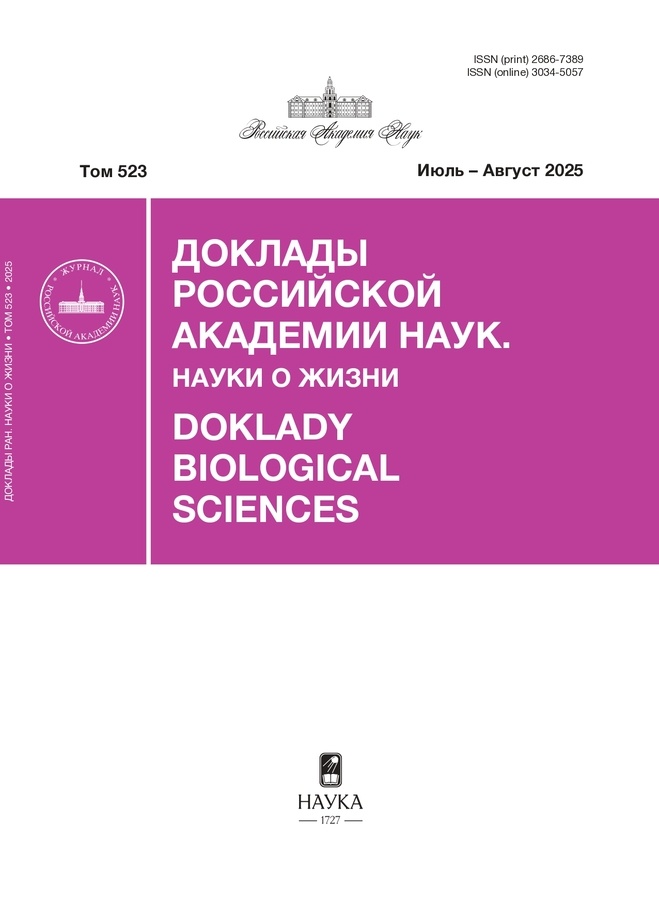Роль BDNF в противодепрессивных эффектах электросудорожной терапии
- Авторы: Ушакова В.М.1,2, Зубков Е.А.1, Морозова А.Ю.1, Павлов К.А.1, Зоркина Я.А.1, Абрамова О.В.1, Очнева А.Г.1, Гурина О.И.1, Тарковская К.Ш.1, Иноземцев А.Н.2, Чехонин В.П.1,3
-
Учреждения:
- Федеральное государственное бюджетное учреждение “Национальный медицинский исследовательский центр психиатрии и наркологии имени В.П. Сербского» Министерства Здравоохранения России
- Московский государственный университет имени М.В. Ломоносова
- Федеральное государственное автономное образовательное учреждение высшего образования “Российский национальный исследовательский медицинский университет имени Н.И. Пирогова” Министерства здравоохранения Российской Федерации
- Выпуск: Том 519, № 1 (2024)
- Страницы: 42-46
- Раздел: Статьи
- URL: https://gynecology.orscience.ru/2686-7389/article/view/651379
- DOI: https://doi.org/10.31857/S2686738924060069
- ID: 651379
Цитировать
Полный текст
Аннотация
Электросудорожная терапия (ЭСТ) считается эффективным методом лечения депрессии, который оказывает ряд биологических эффектов, в том числе воздействуя на нейротрофические факторы. В данной работе было проведено исследование влияния ЭСТ на поведение крыс при депрессивно-подобном состоянии, вызванном применением ультразвука переменной частоты (20–45 кГц) и изучен вклад изменения экспрессии нейротрофического фактора мозга (BDNF) в наблюдаемые эффекты. Результаты исследования подтверждают терапевтический потенциал ЭСТ в нивелировании депрессивно-подобного состояния у грызунов и роль BDNF в данных процессах. В дальнейшем необходимо исследовать связь нейротрофина со структурными изменениями и изучить другие нейротрофические биомаркеры, которые могут быть связаны с развитием депрессивно-подобного состояния и действием терапии.
Ключевые слова
Полный текст
Об авторах
В. М. Ушакова
Федеральное государственное бюджетное учреждение “Национальный медицинский исследовательский центр психиатрии и наркологии имени В.П. Сербского» Министерства Здравоохранения России; Московский государственный университет имени М.В. Ломоносова
Автор, ответственный за переписку.
Email: ushakovavm@yandex.ru
Отдел фундаментальной и прикладной нейробиологии, кафедра высшей нервной деятельности, биологический факультет
Россия, Москва; МоскваЕ. А. Зубков
Федеральное государственное бюджетное учреждение “Национальный медицинский исследовательский центр психиатрии и наркологии имени В.П. Сербского» Министерства Здравоохранения России
Email: ushakovavm@yandex.ru
Отдел фундаментальной и прикладной нейробиологии
Россия, МоскваА. Ю. Морозова
Федеральное государственное бюджетное учреждение “Национальный медицинский исследовательский центр психиатрии и наркологии имени В.П. Сербского» Министерства Здравоохранения России
Email: ushakovavm@yandex.ru
Отдел фундаментальной и прикладной нейробиологии
Россия, МоскваК. А. Павлов
Федеральное государственное бюджетное учреждение “Национальный медицинский исследовательский центр психиатрии и наркологии имени В.П. Сербского» Министерства Здравоохранения России
Email: ushakovavm@yandex.ru
Отдел фундаментальной и прикладной нейробиологии
Россия, МоскваЯ. А. Зоркина
Федеральное государственное бюджетное учреждение “Национальный медицинский исследовательский центр психиатрии и наркологии имени В.П. Сербского» Министерства Здравоохранения России
Email: ushakovavm@yandex.ru
Отдел фундаментальной и прикладной нейробиологии
Россия, МоскваО. В. Абрамова
Федеральное государственное бюджетное учреждение “Национальный медицинский исследовательский центр психиатрии и наркологии имени В.П. Сербского» Министерства Здравоохранения России
Email: ushakovavm@yandex.ru
Отдел фундаментальной и прикладной нейробиологии
Россия, МоскваА. Г. Очнева
Федеральное государственное бюджетное учреждение “Национальный медицинский исследовательский центр психиатрии и наркологии имени В.П. Сербского» Министерства Здравоохранения России
Email: ushakovavm@yandex.ru
Отдел фундаментальной и прикладной нейробиологии
Россия, МоскваО. И. Гурина
Федеральное государственное бюджетное учреждение “Национальный медицинский исследовательский центр психиатрии и наркологии имени В.П. Сербского» Министерства Здравоохранения России
Email: ushakovavm@yandex.ru
член-корреспондент, Отдел фундаментальной и прикладной нейробиологии
Россия, МоскваК. Ш. Тарковская
Федеральное государственное бюджетное учреждение “Национальный медицинский исследовательский центр психиатрии и наркологии имени В.П. Сербского» Министерства Здравоохранения России
Email: ushakovavm@yandex.ru
Отдел фундаментальной и прикладной нейробиологии
Россия, МоскваА. Н. Иноземцев
Московский государственный университет имени М.В. Ломоносова
Email: ushakovavm@yandex.ru
кафедра высшей нервной деятельности, биологический факультет
Россия, МоскваВ. П. Чехонин
Федеральное государственное бюджетное учреждение “Национальный медицинский исследовательский центр психиатрии и наркологии имени В.П. Сербского» Министерства Здравоохранения России; Федеральное государственное автономное образовательное учреждение высшего образования “Российский национальный исследовательский медицинский университет имени Н.И. Пирогова” Министерства здравоохранения Российской Федерации
Email: ushakovavm@yandex.ru
академик РАН, Отдел фундаментальной и прикладной нейробиологии
Россия, Москва; МоскваСписок литературы
- Malhi G.S., Mann J.J. Depression // Lancet. 2018. Vol. 392. P. 2299–2312.
- Kellner C.H., Kaicher D.C., Banerjee H., et al. Depression severity in electroconvulsive therapy (ECT) versus pharmacotherapy trials // The journal of ECT. 2015 Vol. 31. P. 31–33.
- Kritzer M.D., Peterchev A.V., Camprodon J.A. Electroconvulsive Therapy: Mechanisms of Action, Clinical Considerations, and Future Directions // Harvard review of psychiatry. 2023. Vol. 31, N 3. P. 101–113.
- Réus G.Z., de Moura A.B., Borba L.A., et al. Strategies for Treatment-Resistant Depression: Lessons Learned from Animal Models // Molecular neuropsychiatry. 2019. Vol. 5, N 4. P. 178–189.
- Subramanian S., Lopez R., Zorumski C.F., et al. Electroconvulsive therapy in treatment resistant depression // Journal of the neurological sciences. 2022. Vol. 434:120095.
- Maffioletti E., Carvalho Silva R., Bortolomasi M., et al. Molecular Biomarkers of Electroconvulsive Therapy Effects and Clinical Response: Understanding the Present to Shape the Future // Brain sciences. 2021. Vol. 11, N 9: 1120.
- Ушакова В.М., Зубков Е.А., Морозова А.Ю., и др. Влияние электросудорожной терапии на когнитивные функции крыс при депрессивно-подобном состоянии // Бюллетень экспериментальной биологии и медицины. 2017. Т. 163. № 5. С. 549–552.
- Морозова А.Ю., Зубков Е.А., Кошкин Ф.А., и др. Экспрессия генов, кодирующих серотониновые рецепторы и SERT в различных структурах мозга у стрессированных хроническим воздействием ультразвука крыс // Бюллетень экспериментальной биологии и медицины. 2013. Т. 156. № 9. С. 291–294.
- Chen F., Danladi J., Wegener G., et al. Sustained Ultrastructural Changes in Rat Hippocampal Formation After Repeated Electroconvulsive Seizures // The international journal of neuropsychopharmacology. 2020. Vol. 23, N7. P. 446–458.
- Giacobbe J., Pariante C.M., Borsini A. The innate immune system and neurogenesis as modulating mechanisms of electroconvulsive therapy in pre-clinical studies // Journal of psychopharmacology (Oxford, England). 2020. Vol. 34, N10. P. 1086–1097.
- Kowiański P., Lietzau G., Czuba E., et al. BDNF: A Key Factor with Multipotent Impact on Brain Signaling and Synaptic Plasticity // Cellular and molecular neurobiology. 2018. Vol. 38, N3. P. 579–593.
- Duman R.S., Deyama S., Fogaça M.V. Role of BDNF in the pathophysiology and treatment of depression: Activity-dependent effects distinguish rapid-acting antidepressants // The European journal of neuroscience. 2021. Vol. 53, N1. P. 26–139.
- Björkholm C., Monteggia L.M. BDNF – a key transducer of antidepressant effects // Neuropharmacology. 2016. Vol. 102. P. 72–79.
Дополнительные файлы










